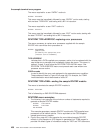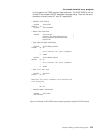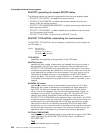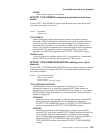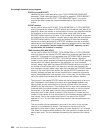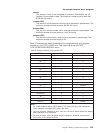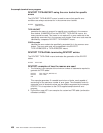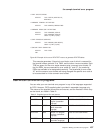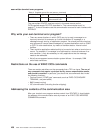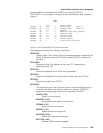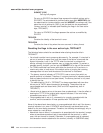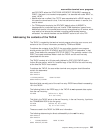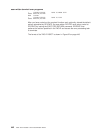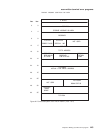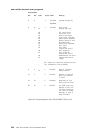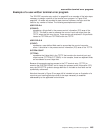
Table 21. Supplied source files and macros (continued)
Name Type Description Library
DFHTEPCA Macro Assembler-language
communication area
CICSTS13.CICS.SDFHMAC
The user-written DFHTEP receives control in the same manner as the
CICS-supplied sample DFHTEP, described in “The communication area” on
page 417. It should therefore use the communication area as its basic interface with
DFHTACP.
Why write your own terminal error program?
v There are some situations in which CICS may try to send a message to an
input-only terminal; for example, an ‘invalid transaction ID’ message, or a
message wrongly sent by an application program. You should provide a terminal
error program to reroute these messages to a system destination such as CSMT
or CSTL or other destinations, by means of transient data or interval control
facilities.
v There could be application-related activity to be carried out when a terminal error
occurs. For example, if a message is not delivered to a terminal because of an
error condition, it may be necessary to notify applications that the message
needs to be redirected.
v Not all errors represent communication-system failures - for example, SAM
end-of-data conditions.
Restrictions on the use of EXEC CICS commands
There are certain restrictions on the commands that a TEP can issue. The use of
any commands that require a principal facility causes unpredictable results,
and should be avoided. In particular, you should not use commands that invoke
the following functions:
v Terminal control (“CEMT-type” commands, such as EXEC CICS INQUIRE
TERMINAL,
are
permissible)
v BMS (except routing)
v ISC communication (including function shipping).
Addressing the contents of the communication area
After your terminal error program receives control from DFHTACP, it should obtain
the address of the communication area by means of an EXEC CICS ADDRESS
COMMAREA command.
user-written terminal error programs
438
CICS TS for OS/390: CICS Customization Guide



